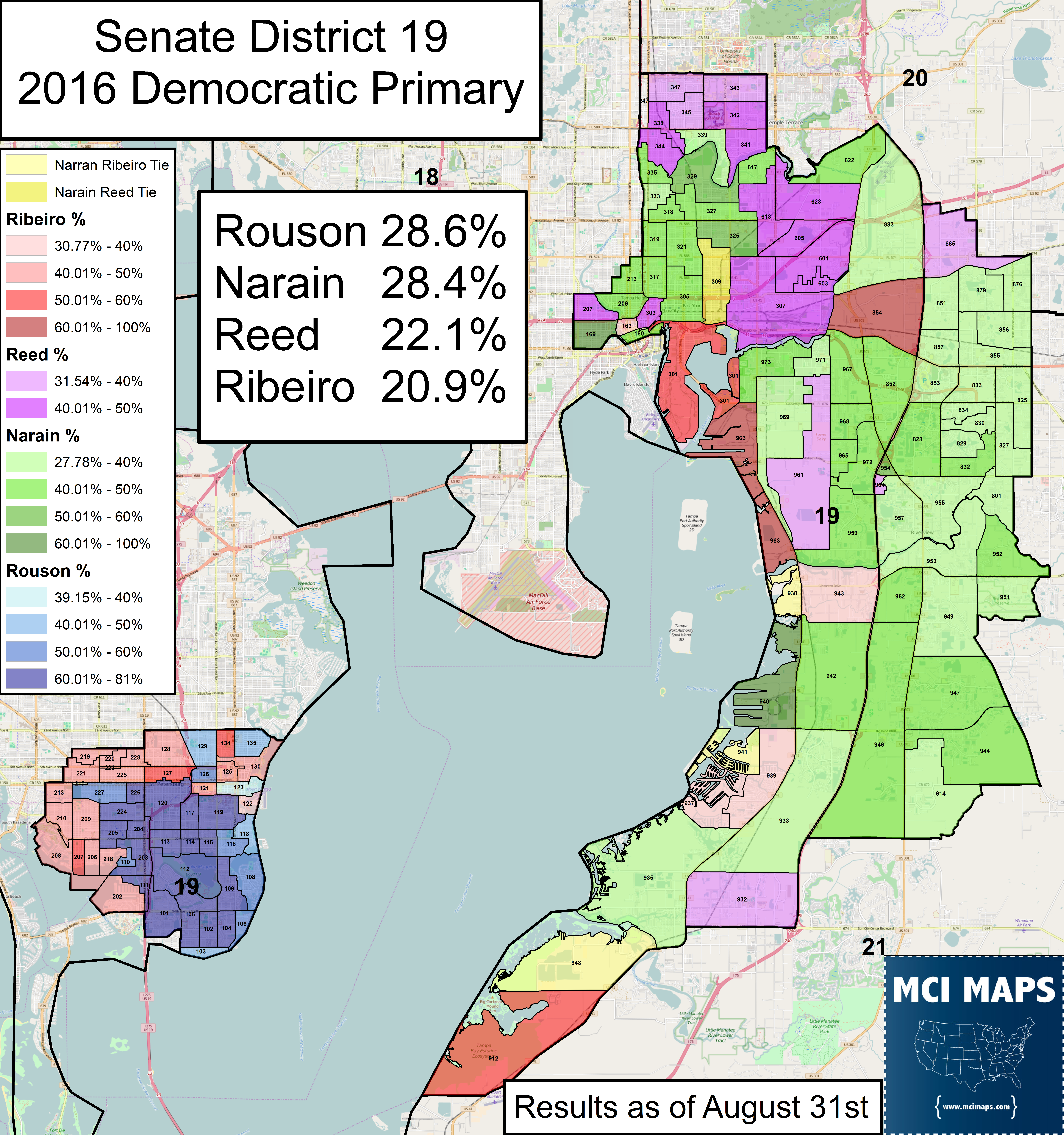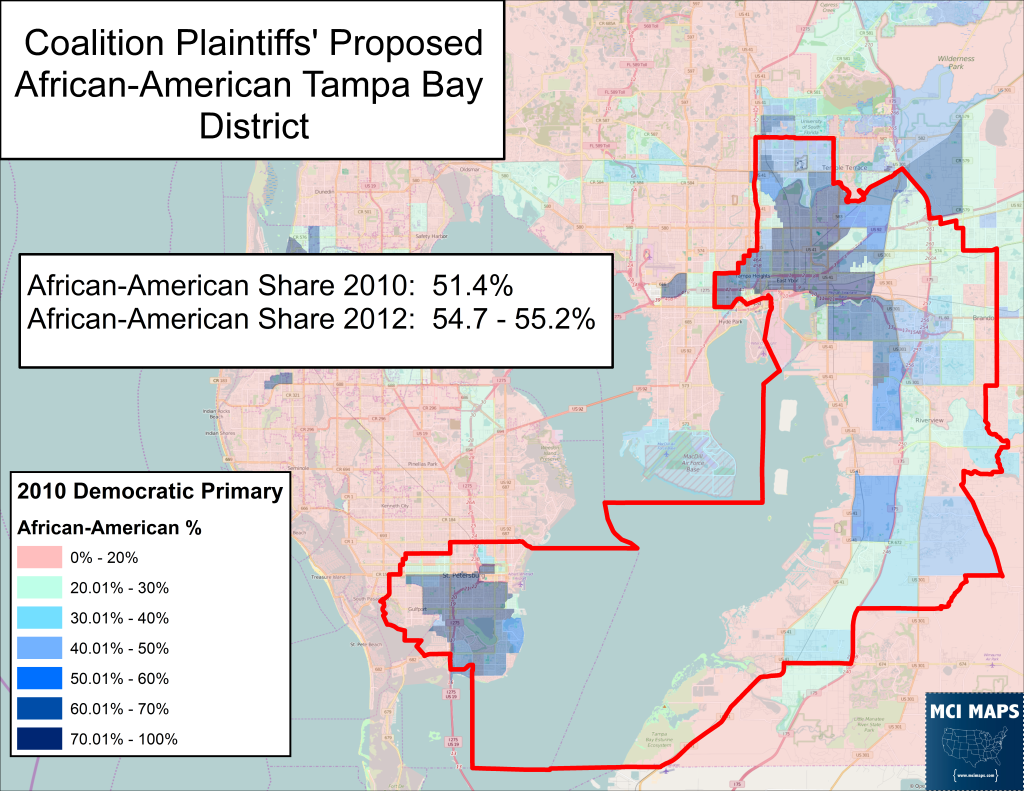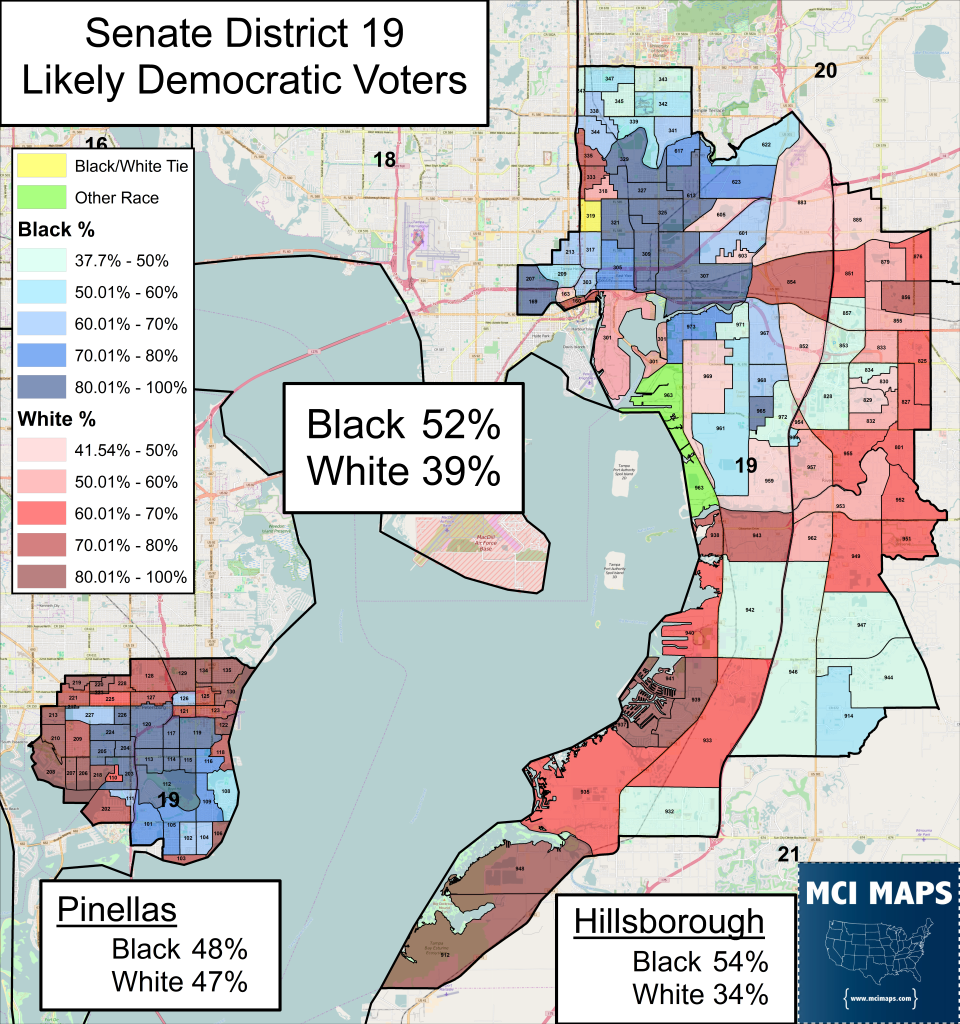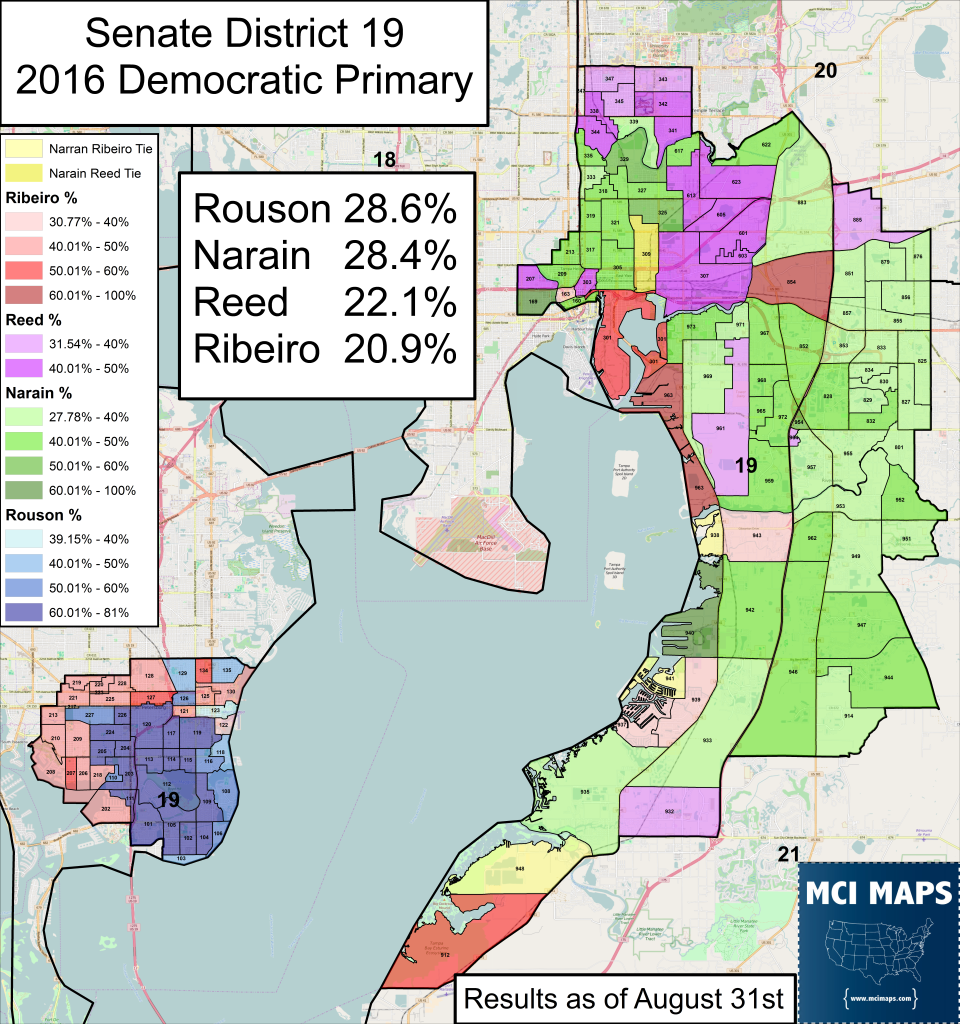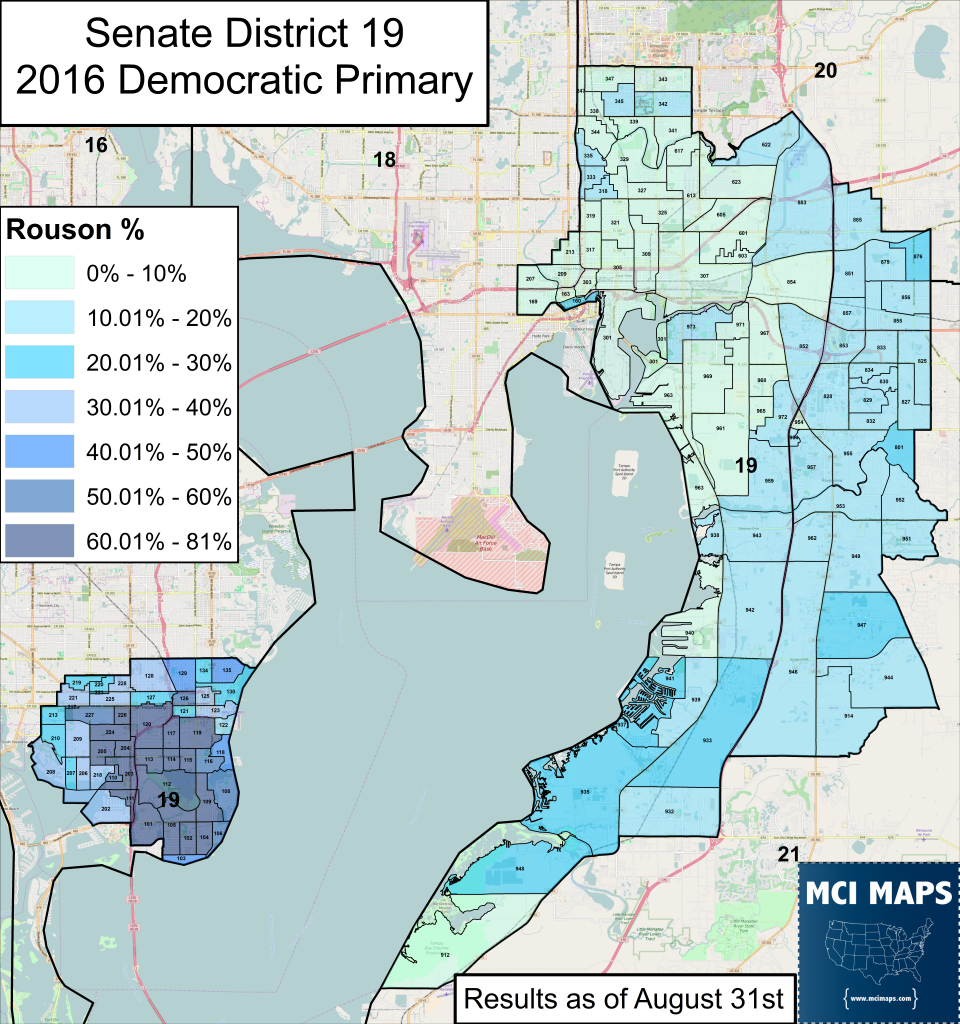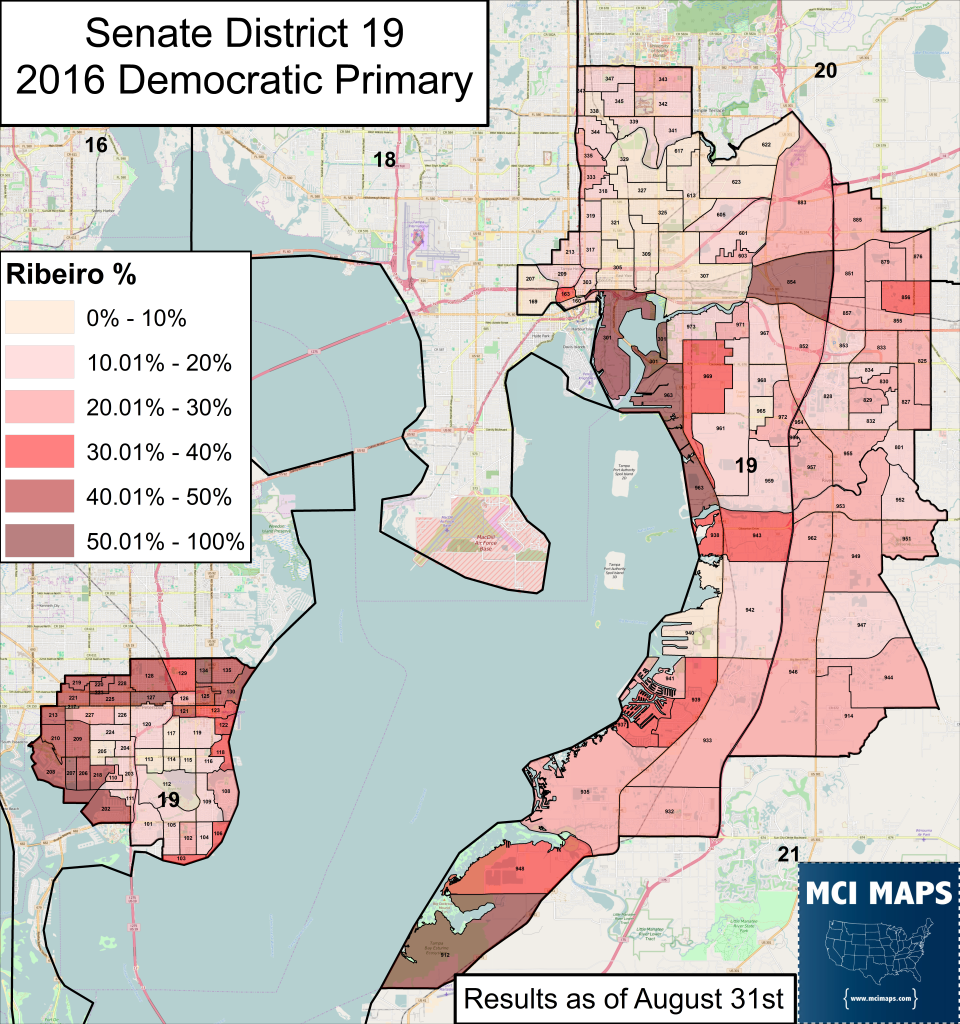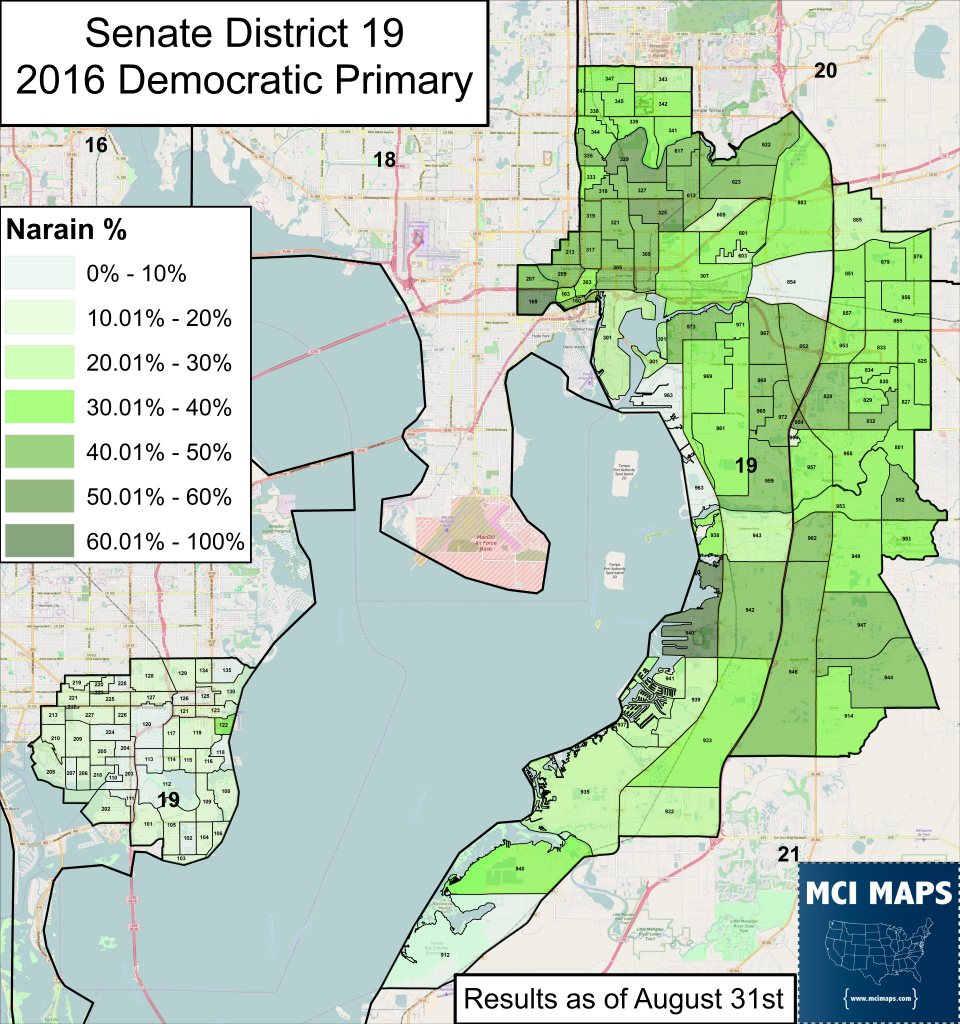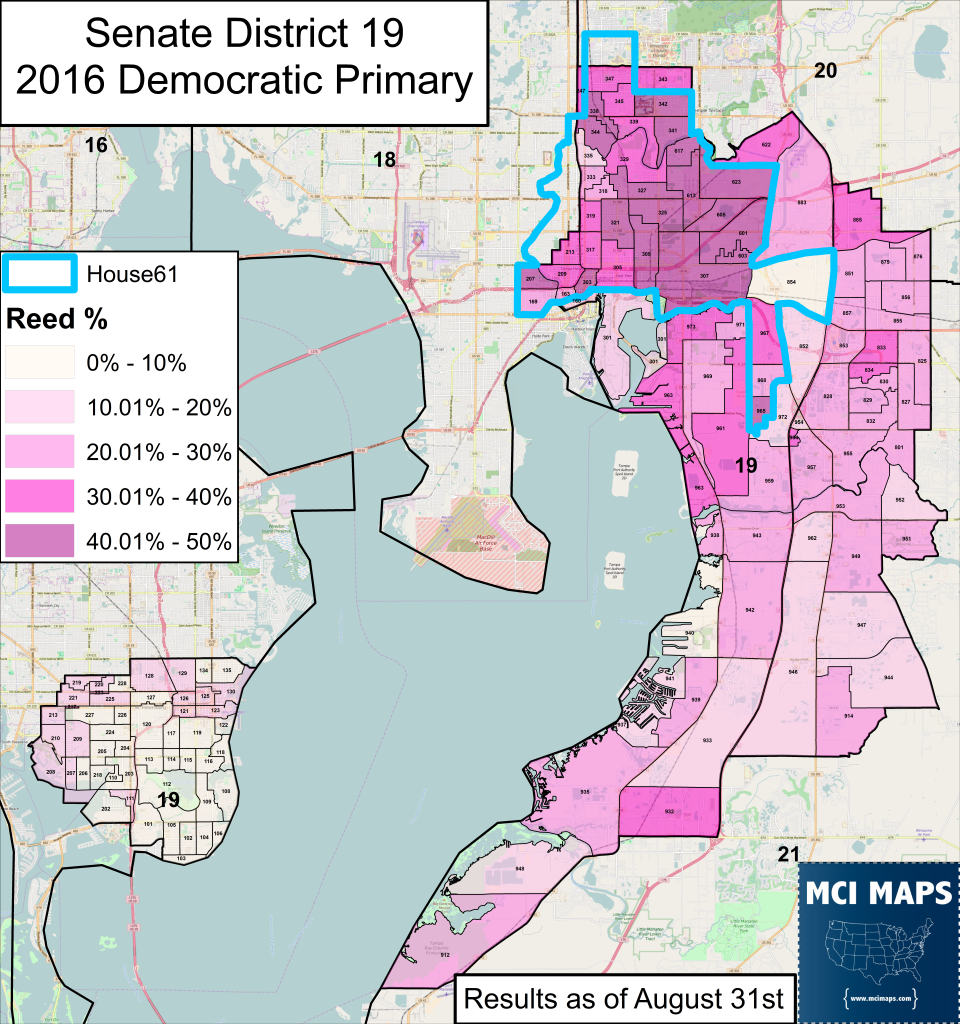Anyone who followed my Florida redistricting coverage in 2015 knows I was strongly against a senate district that linked Tampa and St Petersburg by crossing the Tampa Bay. The argument was that only by linking the African-Americans of Tampa and downtown St Peterburg could a proper African-American access seat be created. The flaw in this argument was that the legislature relied on outdated data and ignored recent elections that had taken place after large African-American registration increases in Tampa. At the end of the day, a district crossing the Tampa Bay was adopted. This set off a major primary for the open seat.
As I highlighted last year, the justification for crossing the bay was undercut by the fact the Pinellas portion included a sizable collection of white precincts on its edge. The plan, proposed by the coalition plaintiffs, actually took in more of Pinellas than the state legislature did. Many white suburbs were added to a seat designed to be African-American.
The result was a district that was not as African-American as it could be. While the Hillsborough portion is likely to be African-American majority in the primary, Pinellas will be more split, depending on turnout.
The map below shows the estimated democratic vote, based on new registration and voting history.
With the election now past, we will soon have turnout figures. Turnout fluctuations could result in a more or less African-American primary. Regardless, keep this map in mind as we look at the results.
The Candidates
Four candidates ran for the seat.
- Darryl Rouson — African-American State Representative for House District 70, which goes into both counties, but is centered in Pinellas/St Petersburg.
- Ed Narain — African-American State Representative for House District 61, based in Hillsborough/Tampa. Elected in 2014.
- Betty Reid — Former African-American Representative for House District 61 — was termed out in 2014.
- Augie Ribeiro — White trial lawyer from Pinellas, promised to self-fund much of his race.
Ribeiro’s entry caused concern that the seat could elect a white Senator despite being designed for African-Americans to control the primary. The prospect of a three-way African-American split could allow Ribeiro to win with just white voters, which would likely make up 30-40% of the vote. Ribeiro also threatened to eat into Rouson’s Pinellas base of support. Pinellas activists wanted to control the Senate district, which always fell into the hands of a Hillsborough candidate. Pinellas only makes up 30% of the districts democratic registration, but thanks to far superior turnout, comes closet to 40% of the primary vote. To have a shot, Pinellas was best unified. Ribeiro threatened that.
Narain was hurt by Reed’s entry into the race. The split of Tampa was a problem for Narain, who had much more institutional and financial support. Reed, through her years in the state house, did have strong community/church ties and modest name ID despite having little money.
The Results
The results were extremely close. As of election night, Rouson leads with 76 votes. Their are 100+ provision ballots to count and a mandatory machine recount. In the meantime, Rouson leads with 28.6% of the vote.
Each candidate had their blocks of voters. At the county level, Rouson dominated in Pinellas, managing to secure 52% in Pinalls while getting 4th place in Hillsborough. Riberio managed to only take 27% in Pinellas, not even securing the entire white vote. Narain got 40% in Hillsborough, but was hurt by Reed securing a solid 32%. Narain’s weaker Hillsborough share (doing poorly in Pinellas) still kept him close to Rouson thanks to Hillsborough making 58% of the vote.
The map really highlights the divide in the district. Rouson was confined to the African-American sections of St Petersburg. Riberio took scattered white precincts on the Hillsborough coast and the edges of the Senate line in Pinellas. Narrain took much of downtown Tampa and other portions of Hillsborough, but Reed took many Tampa precincts as well. Riberio was the only candidate who’s vote share didn’t see massive gains/collapses while crossing the county border.
Looking at the candidate shares individually further highlights the divide between the two counties.
Rouson performs strongly in downtown St Petersburg. He even does well in the whiter suburbs that Ribeiro ultimately won. Of the few precincts in Hillsborough where he passes 20%, most are in his current House seat in the southern portion of the county.
Riberio did best in whiter regions. His best areas were the whiter precincts in Pinellas along its border and he has strong showings in the white coastal precincts in Hillsborough.
Narrain has strong showings across Hillsborough, doing his best in the down-town Tampa area. However, his presence in Pinellas is non-existent.
Betty Reid performed best in the Tampa region, where her house district and church base was located. She was weaker in the Southern portions of Hillsborough and a distant fourth in Pinellas.
Three of the four candidates had little cross-over appeal across county lines. At the end, it came down to who better kept their geographic base united. In this case, Rouson did this best. Rouson clearly kept the African-American community of Pinellas largely in his camp and got a decent share of the white vote as well, which kept Riberio down in 4th place district-wide.
Conclusion
The results of the primary, regardless if the recount moves the needle, shows a deeply divided district. The counties of Pinellas and Hillsborough have been pitted against each other for false reasons. As the results show, African-American candidates got nearly 80% of the primary vote. The final turnout numbers by race will definitely come into play when 2022 redistricting comes along. It is almost a sure bet that next decades redistricting will result in a Hillsborough-exclusive African-American senate district. In the meantime, Rouson will either successfully bring Hillsborough into the fold, or find himself with a primary challenger from Tampa in 2020. While incumbent primaries is rare, never underestimate regional pride, especially when the county on the losing end has a higher share of the primary vote.

